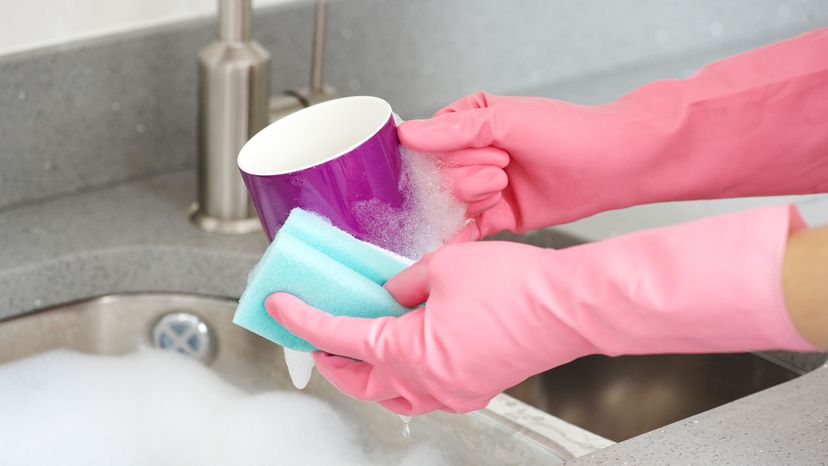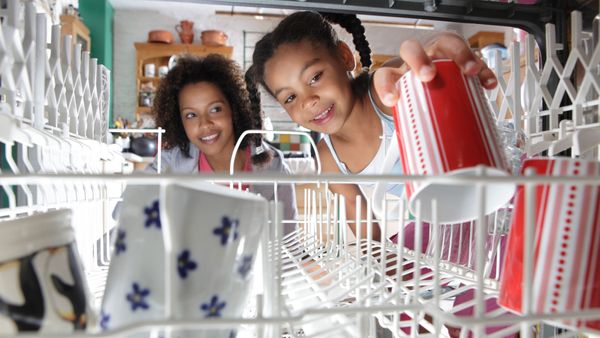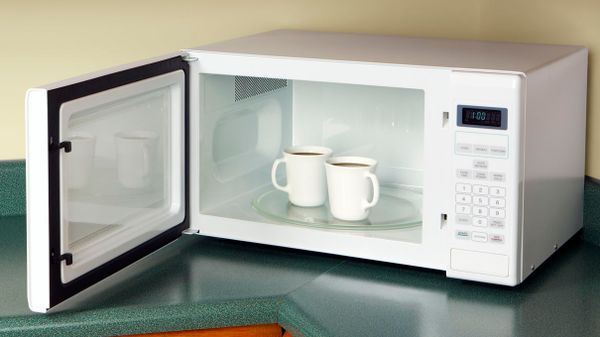
People love their coffee, but most don't extend their profound affection to its trusty receptacle, the coffee cup. Office workers are often guilty of such neglect, merely rinsing and reusing their mug day after day. Or worse, just dumping out the old coffee and filling their cup with new brew.
While it seems that the mug would be just fine with such treatment (after all, hot water kills germs and you're the only person who uses your mug, thank you very much), the truth is even more eye-opening than the beverage's inherent caffeine. A mostly empty mug, left to its own devices, can quickly grow some pretty scary stuff.
Advertisement
"All sorts of germs and bacteria can live on and in your cup, especially if you are in a shared space," explains Melissa Maker, host of the YouTube Channel Clean My Space in an email interview. Maker notes that most bacteria are harmless, but those that aren't can pack a powerful punch. "Cold and flu germs tend to travel and can easily land on or in your cup. Plus, germs from your mouth and hands will also transfer to your cup," she says. "The warmer and damper the environment, the more pleasing for bacteria to fester."
Indeed, the laundry list of possibilities is daunting. "Streptococci, staphylococci and any number of resident or transient oral bacteria, which may include potential pathogens, may reside in unwashed cups," says Dr. Terry D. Connell, professor of microbiology and immunology at the University at Buffalo, via email. "And, of course, if someone else should drink from one's cup, bacteria from their mouths can be transferred into it."
Office environments are particularly conducive to filthy coffee cups. Dr. Charles Gerba, a professor of microbiology at the University of Arizona, published research findings back in 1997 that continue to rock our worlds today. His team assessed bacteria found in office coffee cups and coffee preparation areas and discovered that 41 percent of cups tested were contaminated with coliform bacteria – otherwise known as fecal bacteria! Most of the time, these bacteria are not harmful to people, but they certainly can be, especially to those with weakened or compromised immune systems. The kicker? Dr. Gerba's team found that a small office cup washer (sort of like a mini dishwasher) was all it took to eradicate these and other types of bacteria.
Problem is, most people think a simple rinse and wipe is enough to keep germs at bay; however, this approach is definitely not enough to tackle such formidable opponents. "Bacteria can adhere to the surface of the cup," Connell says, adding, "Washing with soap is essential to remove those bacteria."
That's why public health officials in England put out a plea back in January for reusable cup users to thoroughly wash receptacles after every single drink to prevent the spread of illness. This was in response to a spike in reusable cup use since the nation started imposing a "latte" tax on disposable cups.
Proper cleaning grows even more critical if the coffee in question has been doctored with cream or sugar. "Both of those substances contain nutrients for bacterial growth. While water washing will remove most of the sugar, the oils and proteins in milk or cream require the use of soap to remove," Connell explains.
So here are the easy steps to lessen the germs in your coffee mug:
- Wash your cup with soap and water after every use.
- Wash with a paper towel rather than a sponge — "otherwise you may be putting E. coli and Salmonella in the cup," says Dr. Gerba.
- Dry the cup with a paper towel.
- If your cup has a lid, remember to wash that too.
Advertisement


